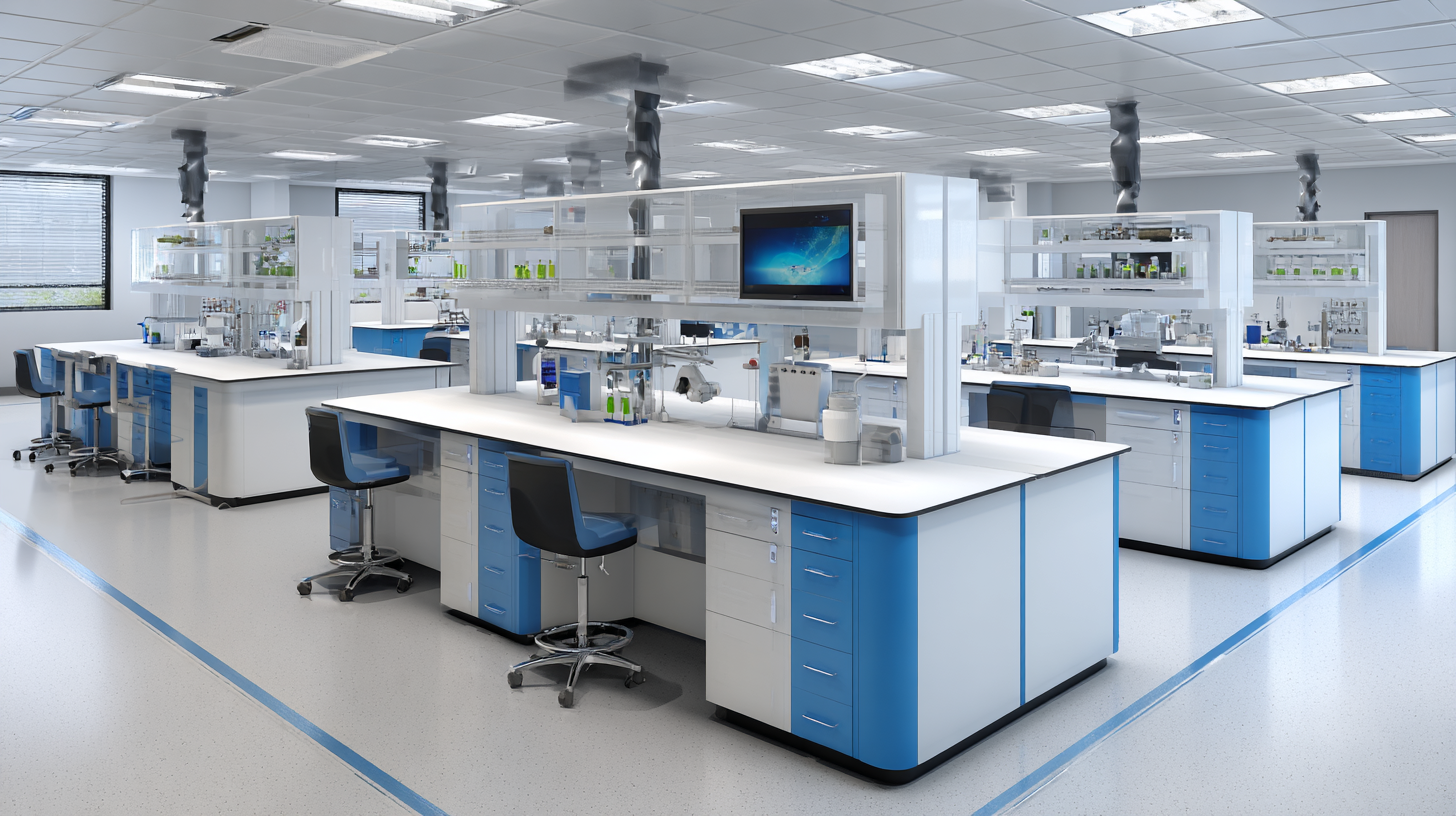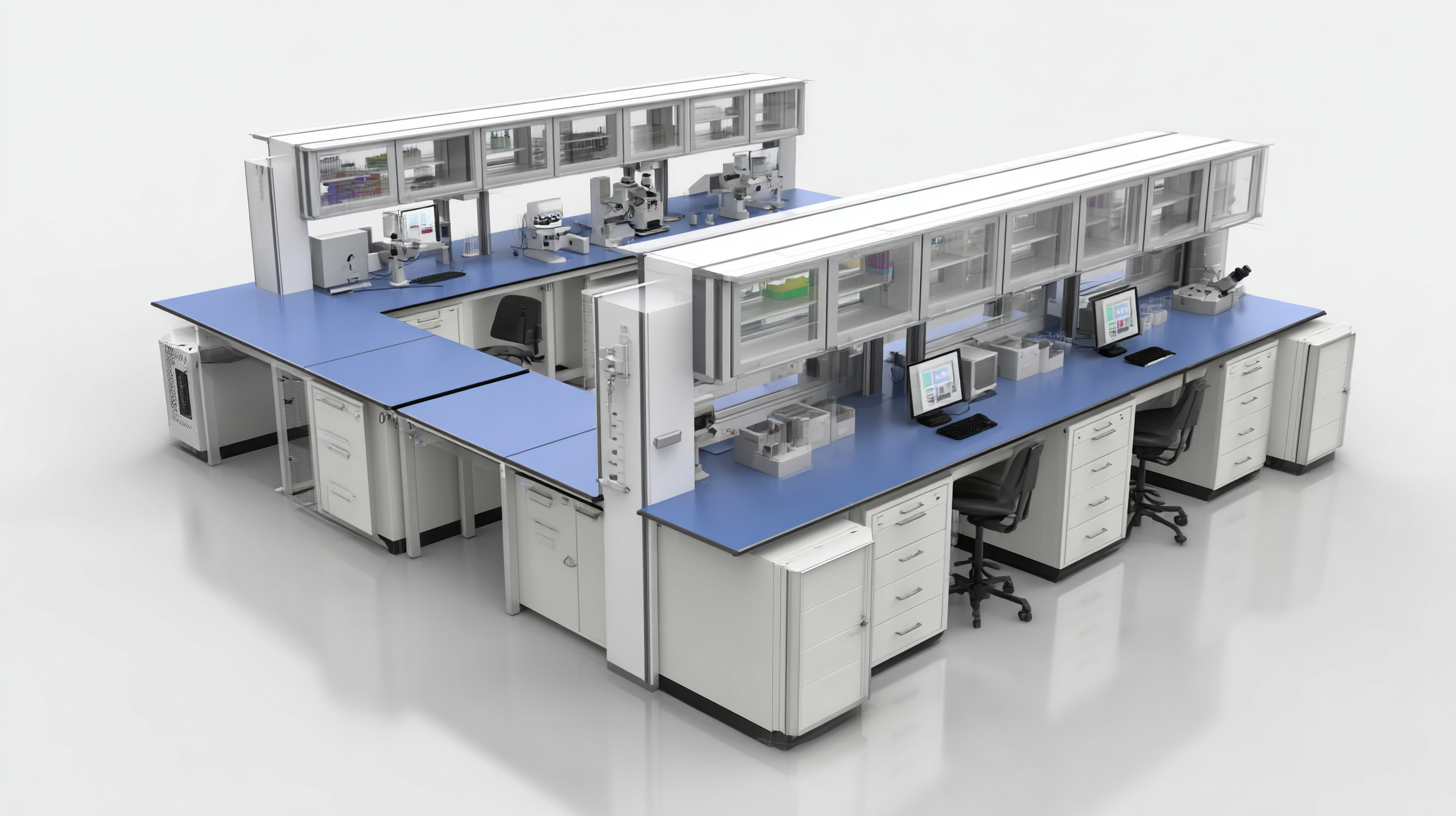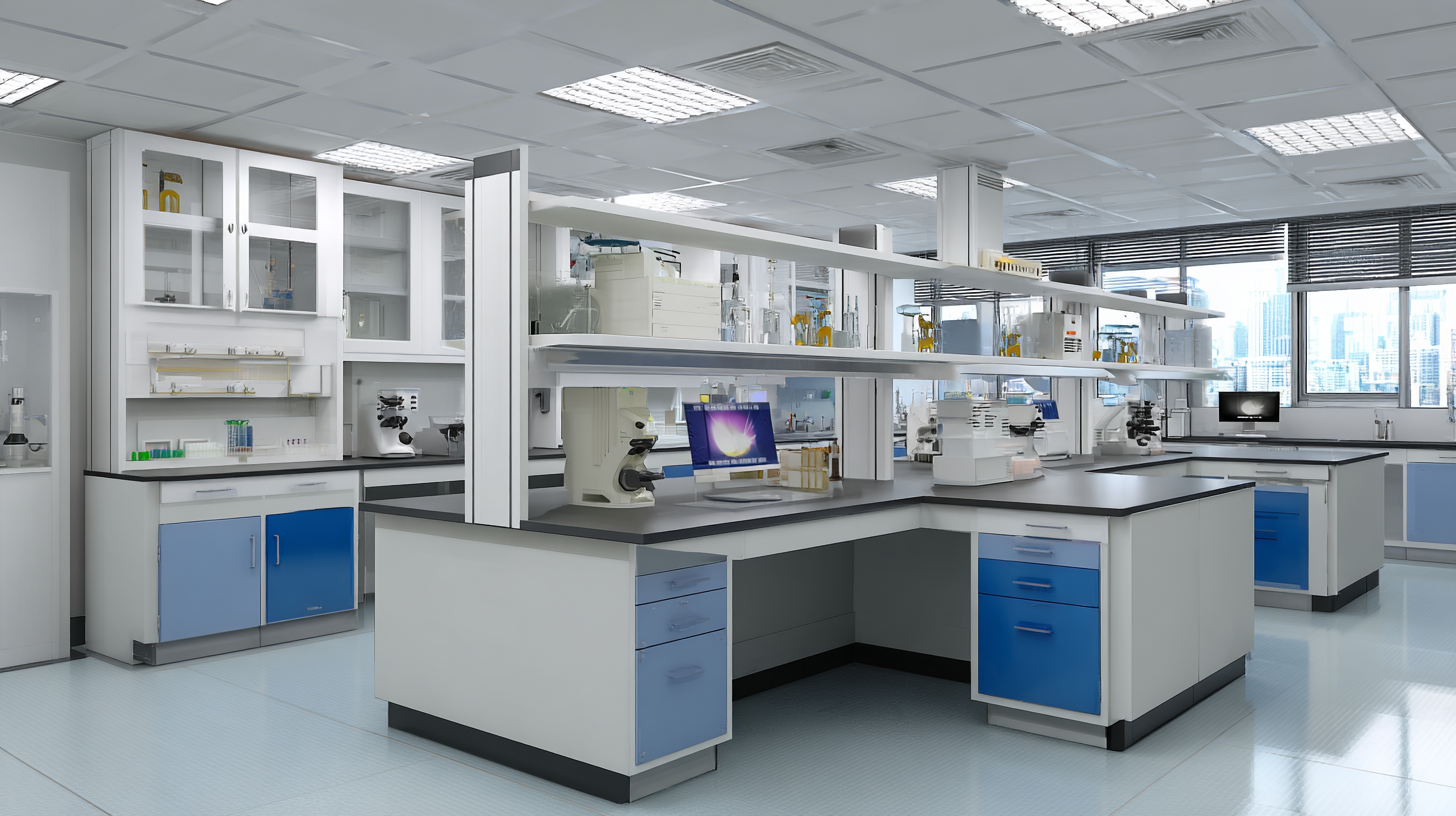In the rapidly evolving landscape of laboratory environments, the selection of the right furniture is crucial for maximizing efficiency and adaptability. Modular Laboratory Furniture stands at the forefront of this trend, offering versatile solutions that can be easily reconfigured to meet the shifting demands of modern scientific workspaces. As we look towards the technological advancements anticipated by 2025, understanding how to choose the best modular options becomes essential for researchers and lab managers alike. This guide delves into the key factors to consider when selecting modular furniture, integrating insights on industry trends and practical recommendations that ensure your laboratory remains functional, efficient, and ready for the future. From ergonomic designs to sustainable materials, the choice of modular laboratory furnishings can significantly impact productivity and workplace dynamics, making it a vital aspect of laboratory setup and optimization.

When selecting modular laboratory furniture, several critical factors must be considered to ensure optimal lab efficiency. First and foremost, the specific needs of the laboratory should dictate the design and functionality of the furniture. For instance, laboratories focusing on chemical research will require robust work surfaces resistant to spills and corrosive substances, while biological labs might prioritize cleanroom compatibility and easy-to-sanitize materials. Understanding these requirements will guide the selection process towards furniture that not only withstands the rigors of daily use but also maintains a safe and productive work environment.

Another essential factor is the adaptability of the furniture to changing lab workflows. Modular laboratory furniture is designed for flexibility, allowing users to reconfigure spaces as projects evolve. This means considering the ease of assembly and disassembly as well as the integration of technology, such as power outlets and data ports, within the furniture. Investing in adaptable solutions enables laboratories to optimize their layouts for different types of experiments or team configurations, thus enhancing their overall efficiency and effectiveness in research and development.
When designing a laboratory, choosing the right modular furniture is crucial, not only for functionality but also for the well-being of its users. Ergonomics plays a significant role in this choice, ensuring that the furniture promotes a healthy posture, reduces fatigue, and enhances productivity. A thoughtful design can reduce the risk of injury caused by repetitive movements or poor posture, making ergonomics an essential consideration in laboratory furniture selection.
**Tips:** When evaluating laboratory furniture, look for adjustable height tables and chairs that cater to a variety of user heights. This flexibility helps accommodate different tasks, ensuring that equipment is easily accessible without straining the body. Additionally, consider furniture with rounded edges and sufficient legroom to avoid discomfort during extended use.
Choosing materials that are not only durable but also easy to clean further supports ergonomic design. For instance, surfaces that resist scratches and stains can help maintain a hygienic workspace while reducing the frequency of replacements. Moreover, light-weight components can make rearranging lab setups easier, promoting an adaptable work environment that aligns with ergonomic principles.
When selecting modular laboratory furniture, it’s crucial to evaluate supplier credentials to ensure you are investing in high-quality, compliant products. Key certifications such as ISO 9001 for quality management systems and ANSI/BIFMA standards for furniture safety and performance can serve as benchmarks when assessing potential suppliers. These certifications not only reflect a commitment to quality and safety but also indicate that the supplier adheres to industry best practices. This guarantees that the furniture will withstand the rigorous requirements of a laboratory environment, promoting both safety and functionality.
In addition, compliance with specific regulations such as the Occupational Safety and Health Administration (OSHA) standards and the American National Standards Institute (ANSI) is essential. These organizations establish guidelines that protect laboratory personnel and ensure that laboratory environments are structured to minimize hazards. Suppliers that prioritize these credentials demonstrate their dedication to manufacturing furniture that meets both safety and regulatory standards. By choosing suppliers with recognized certifications and compliance accreditations, you can ensure that your laboratory furniture enhances both productivity and safety, providing peace of mind as you carry out your research.
| Certification | Description | Compliance Standards | Importance |
|---|---|---|---|
| ISO 9001 | Quality management systems, ensuring consistent quality of products and services. | Quality Assurance | Ensures high-quality standards and continuous improvement. |
| BIFMA | Business and Institutional Furniture Manufacturer's Association, focusing on safety and sustainability in furniture. | Sustainability, Safety | Assures environmentally friendly and safe designing and manufacturing practices. |
| ANSI | American National Standards Institute, sets standards for various products in the U.S. | Safety Standards | Ensures compliance with safety and quality in design and production. |
| ISO 14001 | Environmental management systems, focusing on reducing environmental impact. | Environmental Standards | Promotes sustainable practices and reduction of environmental risks. |
| CE Marking | Indicates conformity with health, safety, and environmental protection standards in the EU. | EU Compliance | Provides assurance of product safety within the European market. |
 Innovative materials and technologies play a crucial role in enhancing the durability and functionality of modular laboratory furniture, making them an essential choice for modern laboratories. According to a report by the National Institute of Standards and Technology (NIST), over 45% of laboratory infrastructure costs are associated with equipment and furniture, highlighting the importance of selecting reliable materials. Advanced polymers and composites are now commonly used in modular lab designs due to their superior resistance to chemicals, moisture, and temperature fluctuations, ensuring longevity even in the most demanding environments.
Innovative materials and technologies play a crucial role in enhancing the durability and functionality of modular laboratory furniture, making them an essential choice for modern laboratories. According to a report by the National Institute of Standards and Technology (NIST), over 45% of laboratory infrastructure costs are associated with equipment and furniture, highlighting the importance of selecting reliable materials. Advanced polymers and composites are now commonly used in modular lab designs due to their superior resistance to chemicals, moisture, and temperature fluctuations, ensuring longevity even in the most demanding environments.
Furthermore, technologies such as modular systems that incorporate smart design principles allow for flexibility and adaptability in lab spaces. A study published in the Journal of Laboratory Design found that well-planned modular furniture can increase the efficiency of laboratory workflows by up to 30%. This adaptability allows labs to adjust their layouts without major renovations, ultimately saving time and costs. The integration of innovative materials not only enhances the aesthetic appeal of lab furniture but also contributes to a sustainable lab environment, as many of these materials are recyclable and eco-friendly, aligning with the growing emphasis on sustainability in laboratory practices.
When it comes to setting up a laboratory, one of the most critical decisions revolves around selecting the right modular furniture. While it’s tempting to go for the cheapest options to fit within a limited budget, it's essential to find a balance between cost-effectiveness and quality. Investing in high-quality laboratory furniture can lead to long-term savings, as durable materials are less likely to require replacement or repair.
Tip: Before making a purchase, assess your laboratory's specific needs and workflow requirements. This will help you identify furniture that not only meets your budget constraints but also enhances productivity and safety in your lab environment.
Moreover, consider the total cost of ownership, including maintenance and operational costs, rather than just the initial purchase price. Quality furniture may come with a higher upfront cost but can ultimately save you money by reducing wear and tear and improving ergonomic comfort for your staff.
Tip: Explore options for modular designs that provide flexibility and adaptability in space usage. Many modular furniture solutions offer customization, allowing you to create an effective workspace without compromising on quality or exceeding your budget. This thoughtful consideration of your expenditures can lead to a more efficient and accommodating laboratory setting.
